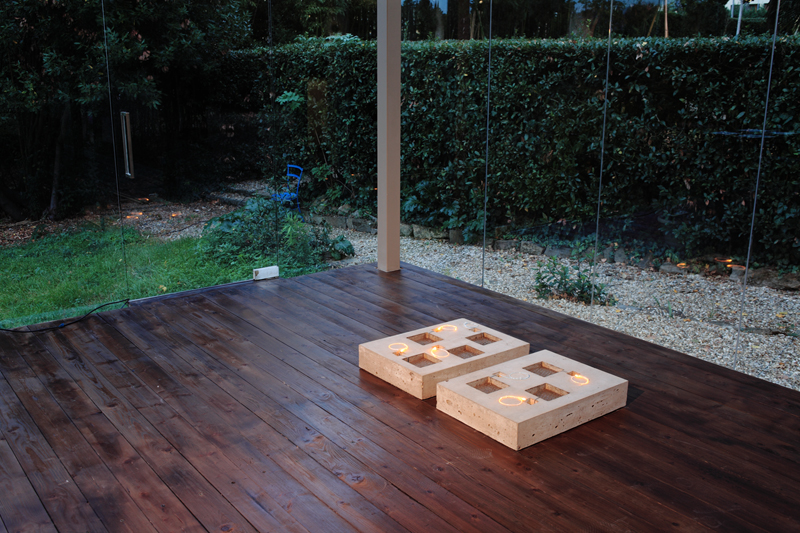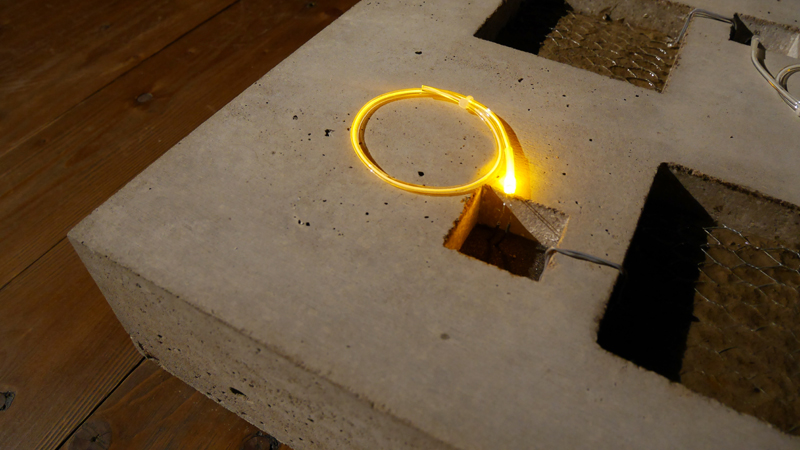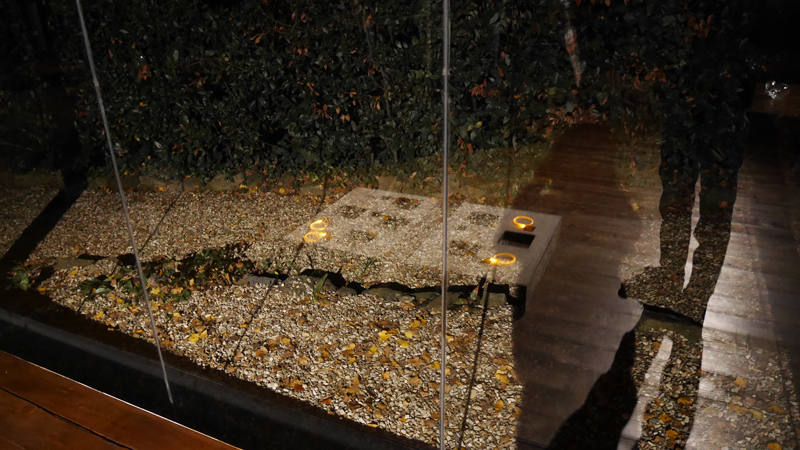Phosgene

Phosgene, porous concrete, mud, peat moss, polyurethane foam, organic matter, bacteria, chicken wire, electronic circuits, leds, plastic pipes, 2017
Phosgene is a highly toxic and poisonous chlorine compound. This gas owes its name, which literally means “born of light”, to the role that light plays in the transformation of chloroform into phosgene. It was one of the chemical forbidden gases used by the Italian army during the Second Italo-Ethiopian War (1935-1936). Since my great-uncle was a soldier in that war, I dedicated a trilogy to the three main chemical gases (arsine, hyperite and phosgene) used in that fascist and colonial war.
The work is a porous concrete sculpture, reminiscent of the shape of a grave, which houses some circles of light that pulsate following the rhythm of the energy produced through anaerobic respiration by bacteria living in the soil of the microbial fuel cells. The shape of the work is inspired by a blurry photo found in a family album with images of the colonial war. In this work voids and pores, death, personal and collective history, chemical transformations and microbial life are evoked together.
The work has been conceived for the project Skūmaz – a metastable state, developed together with Rachel Morellet, Eva Sauer and Tatiana Villani, with a critical text by Eleonora Farina.


Photo by Andrea Abati, Rachel Morellet
